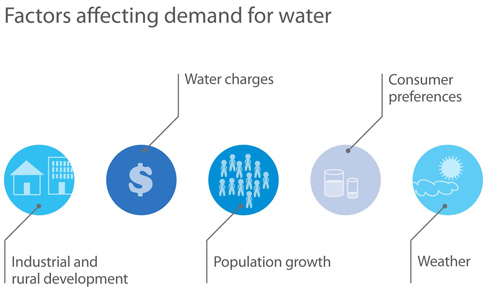How demand for drinking water is forecast
To prepare for the future, local authorities need to forecast how much drinking water will be needed and where. Forecasting involves:
- identifying factors that influence demand (such as weather, population growth, industrial or rural development, water charges, consumer preferences)
- preparing projections for demand over time.

Forecasting usually takes into account data on past water consumption (ideally, average and peak use) and expected population growth. Forecasts are generally more reliable if they are prepared for various sectors (such as domestic or industrial).
Forecasting methods should be as reliable as possible. They can be quantitative (such as mathematical modelling) and qualitative (such as consultation with users and experts). Ideally, both types of method are used and compared.
Forecasting is a tricky business, so assumptions and risks should be identified.
Accurate forecasts allow local authorities to:
- plan to access new water sources
- design and budget for new or upgraded supply systems
- efficiently use public funds.
